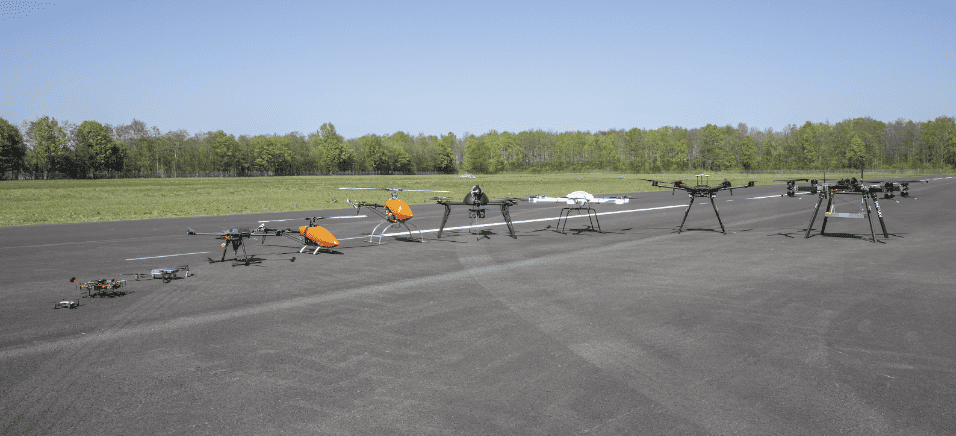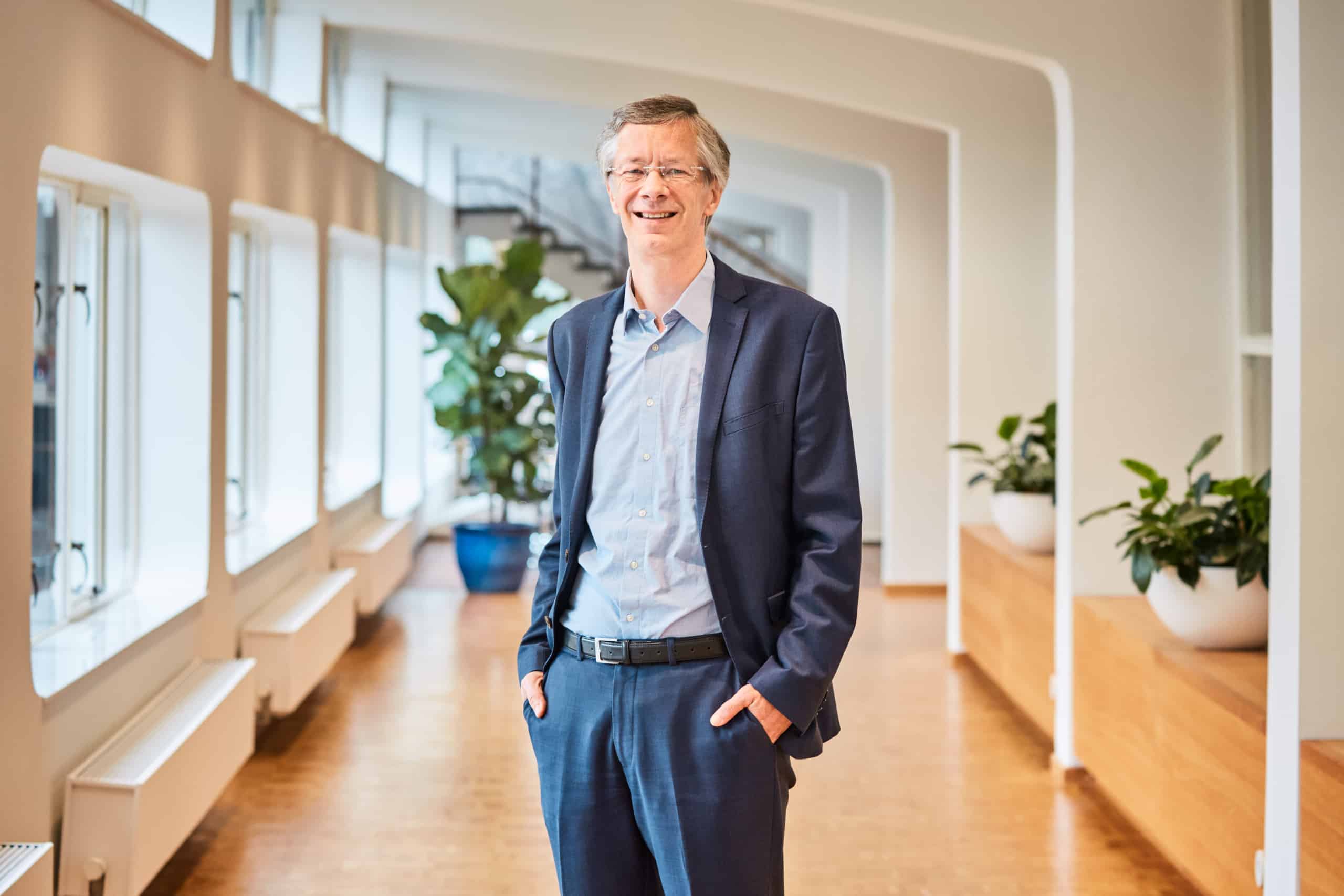
Of course, there are still some technical challenges around Innovative Air Mobility – say, drones with more functions than just fun – but that’s probably not where the biggest hurdle lies. Rather, the bottlenecks we see are in coordination and infrastructure. Who will ensure that all those drones don’t get in the way of other air traffic? And who will ensure that there are places in the city where drones can land and take off?
- The Netherlands Aerospace Centre (NLR) conducts research on infrastructure and traffic control for innovative air mobility.
- Research and test facilities enable relevant stakeholders to learn about urban drone traffic.
These are exactly the kinds of questions the Netherlands Aerospace Centre (NLR) ponders daily. Wesley Poland knows all about it, not only because of his years at NLR but also because of his experience at Bayards Vertiports, an aluminum construction company that builds helidecks and vertiports. “I had the opportunity to get involved with Bayards for a year and a half, and during that time, I also visited all the air-taxis builders. Not only super cool but also super helpful because I know the market well now.”
Early this year, Poland returned to NLR, where he is a business developer dealing with air traffic control and airports. “The main question I’ve been working on for the first three years at NLR is how drone flights don’t conflict with manned traffic. You need some traffic control system to regulate that. We call that ‘U-space,’ a lot of research is being done on that within NLR.”
This involves more than determining how air cabs will soon become part of manned or unmanned air traffic. “That is one branch. In addition, you have operational issues: Where can you fly? Where are you not allowed to fly? How should you fly? Under what conditions and rules should it be done? Also, think about the certification of aircraft. There are a lot of new aircraft coming up; how can we help builders in the certification process? Can we support and advise EASA in this by doing all kinds of safety and risk studies?” Poland likes to point companies to the facilities offered by DNW – NLR’s sister organization – such as one of the largest wind tunnels in the world, located on the grounds at NLR in Marknesse. NLR also has its own drone centre, where, among other things, research is conducted on the impact that drones have on the city and vice versa.
Realistic image
Part of NLR’s work is to give those involved a realistic picture of the possibilities. “We show what can be done and what can’t be done. If you have ever attended one of these IAM events, you know you are bombarded with all kinds of artist impressions with the most beautiful presentations. Including the most convincing pitches from developers who say, well, we’re going to fly there and there next year. And we’re commercializing. I understand that because, of course, there is a lot of investor money behind it. Those organizations have to proceed that way; you simply have no choice. We’re not saying that it’s all futuristic or impossible – things will certainly change; we are on the eve of a revolution within aviation. But the position we do try to take is to paint as realistic a picture as possible to all parties involved. On the government side, on the industry side, and on the market side. Not to slow things down; on the contrary, we want to speed up the process. But we know where aviation comes from. And that you don’t change it overnight.”
The products NLR provides for its customers often take the form of a report containing the results of a specific study. But at least as often, it involves NLR’s many testing capabilities. In addition to the wind tunnel, these include the drone centre, where simulations can provide real-life answers to key development questions. Moreover, NLR has extensive digital facilities in which an airspace full of drones and manned aircraft can be recreated, including the air traffic controllers who must manage it all. “That leads to better knowledge about various scenarios and sometimes concrete results such as a CONOPS, a concept of operations.”

Social acceptance
NLR is also thinking a lot about the social consequences of increasing drone traffic in an urban environment. “What is clear by now is that acceptance depends entirely on the specific use case. Does it produce noise or not, how much does it bother me, but also: is it meant for medical transport or for moving some rich gentleman or lady? In all those cases, the reaction will be different.”
Poland makes another distinction between acceptance and desirability. “Acceptance is somewhat more passive; compare it to the blue envelope from the tax office that no one is waiting for but which we have agreed to respond to. Desirability is much more about the social added value of those drones. What will I gain from one of those things flying over my head? And is that enough to say: it’s all fine?” Numbers also play a role in this, by the way, Poland immediately adds. “In our tests – for example with VR simulations – and our research, we deliberately make the phenomenon a little bigger, even while the numbers are still small. Because we already have to consider the future; someday, you might have cities where, instead of large parcel vans, drones suddenly hover above your head.”
Infrastructure
Technically, the developments around IAM all look fine, and with a little luck, the regulations and social acceptance will also be fine, Poland suspects. But that doesn’t get us there yet because, without urban infrastructure, nothing will fly. “In that case, only regional air mobility is feasible, but that was not the goal,” Poland says. “The big question for now is: how will you land such a thing in dozens or maybe hundreds of places in a city? It won’t happen in a crowded city square because that puts bystanders in danger. So you will have to build a certain infrastructure for it. At the same time, consider all kinds of additional facilities such as electricity supply. I notice so far that in urban planning or among architects, not much consideration is given to it yet.”
Poland thinks pacts should be made with parties around urban development to begin with. “Appliance builders should sit closer to infrastructure developers. Or start talking to architects. And get in touch early on with the cities they focus on.” So Poland sees an important role for aircraft builders, but municipalities can also contribute. “A city like Eindhoven could say: we want to start this as a municipality or region. Then, they can steer urban developments so that, for example, it becomes possible to fly drones between the central station and the airport. If you don’t have the infra, you’re done quickly. But the reverse also applies: cities that take the initiative can develop a head start.”

